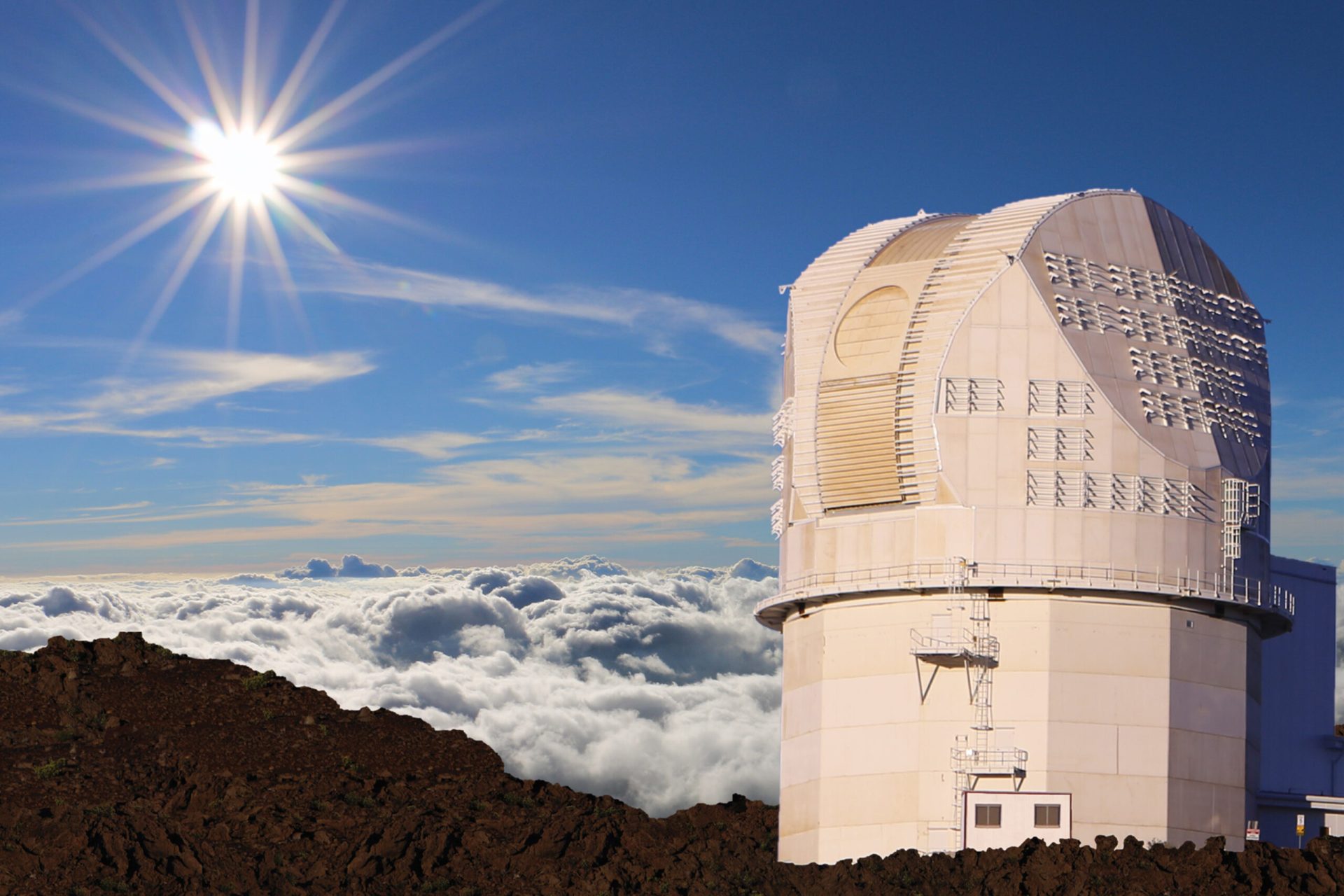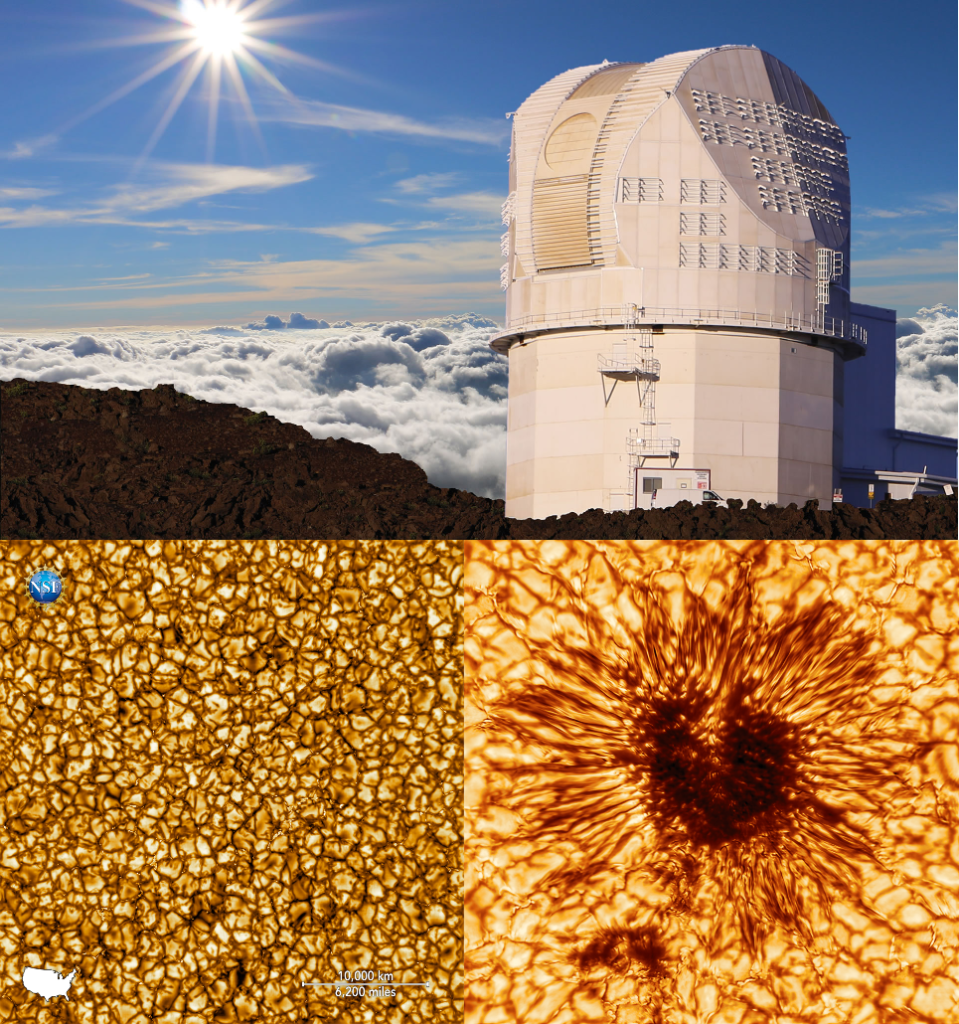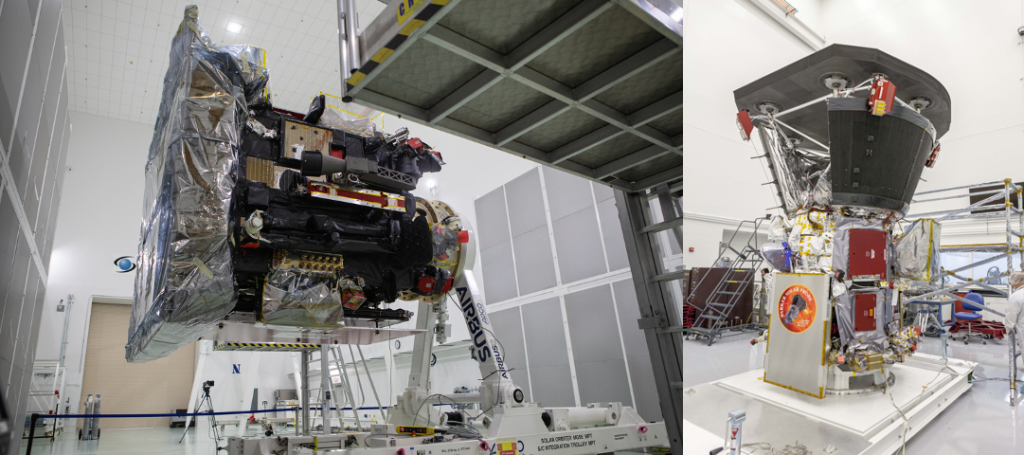
Recent and Future Solar Observatories
Written by: Michele Berretti, Vertti Tarvus, Nasrin Talebpour
Scientific observations of our star, the Sun, are made with specially tailored solar observatories. Many types of solar observatories exist, and they can be installed either on Earth’s surface, or in orbit around Earth or the Sun. Ground based telescopes can be used for observations in the visual to near-infrared, or radio wavelength range, while space-based telescopes are needed for UV, X-ray, etc. observations due to Earth’s atmosphere blocking these wavelengths.
Ground-based observatories
Ground based solar observatories can be used to study features on the Sun’s surface, such as sunspots, granules or magnetic fields. Modern solar observatories use computer-controlled adaptive optics to obtain sharp images of the solar surface through Earth’s turbulent atmosphere.
The current front-runner of ground based solar observatories is the U.S. based Daniel K. Inouye Solar Telescope (DKIST), located at the Haleakala volcano at Hawaii. The construction of DKIST began in 2013, with the first images from the Sun being obtained in late 2019. DKIST is currently world’s largest optical solar telescope, having a 4.24 meter mirror, surpassing earlier solar observatories such as the U.S. based Goode Solar Telescope (1.60 m). DKIST can resolve length scales down to 20 km, which allows the study of fundamental processes on the solar surface. The first images from the DKIST show a detailed view of the Sun’s surface, highlighting its turbulent, “boiling” structure.
The objective of DKIST is to learn to understand the intricate mechanisms driving solar activity, aiming to answer the following science questions: How are magnetic fields on the solar surface generated and dissipated? What magnetic configurations lead to solar activity such as flares and coronal mass ejections? What mechanisms cause variations in the solar dynamo and drive the sunspot cycle and solar energy output?

Space-based solar observatories
The two key missions are currently exploring the Sun and solar wind.
Solar Orbiter was launched on 10 February 2020, 04:03 UTC. The mission will provide close-up, high latitude observations of the Sun. It is an ESA-led mission with strong NASA participation with total ten instruments on board. Solar Orbiter will be used to improve our understanding of how the Sun creates and controls the heliosphere, the vast amount of charged particles blown by the solar wind into the interstellar medium.
The spacecraft will combine in situ measurements and remote sensing observations to gain new information about the solar wind, the heliospheric magnetic field, solar energetic particles, transient interplanetary disturbances and the Sun’s magnetic field.
Being close to the Sun allows for observations of solar surface features and their connection to the heliosphere for much longer periods than from near-Earth vantage points. The view of the solar poles will help us to understand how dynamo processes generate the Sun’s magnetic field.
Another key mission is NASA’s Parker Solar Probe that was launched in 12 August 2018, 07:31 UTC. It is the first NASA mission named for a living scientist, Dr. Eugene Parker, who theorized the existence of the solar wind. It is also nicknames as the humanity’s first mission to ‘touch’ a star and will carry over 1.1 million people’s names to the Sun.
The mission will provide new data on solar activity and make definitive contributions to our ability to forecast major space-weather events that impact life on Earth. The primary science goals for the mission are to trace the flow of energy and understand the heating of the solar corona and to explore what accelerates the solar wind. There are four major investigations will provide different measurements and imaging.
Parker Solar Probe will use seven Venus flybys over nearly seven years to gradually coming as close as 3.83 million miles (and 6.16 million kilometers) to the Sun, about seven times closer than any spacecraft has come before. At closest approach to the Sun, while the front of Parker Solar Probe’s solar shield faces temperatures approaching 1,400 degrees Celsius, the spacecraft’s payload will be near room temperature, at about 29 degrees Celsius.

Future prospects
Below are presented some interesting future solar observatories and spacecraft
- Solaris: The solar poles are one of the last unexplored regions of the solar system. Ulysses flew over them in the 90s but did not have instruments onboard able to probe the Sun’s parameters we are today most interested in. The ESA/NASA Solar Orbiter by 2025 will provide us the very first oblique angle views of such regions but it is not enough to fully understand the phenomena happening in the solar poles. Therefore better knowledge of the physical processes visible from the pole is necessary to understand the global dynamics of the entire Sun and this is the very goal of Solaris, expected to launch in 2025 for a five years mission. Thus thanks to Solaris we will address the fundamental questions of solar and stellar physics that can only be answered with a view of Sun’s poles.
- SWFO-L1: Space Weather Follow On-Lagrange 1 (SWFO-L1) is a future spacecraft mission planned to monitor signs of solar storm, it will orbit the Sun at approximately 1.5 million kilometers from Earth on the Earth-Sun line, a point known as L1. This mission will use a suite of instruments to make in-situ measurements of the solar wind thermal plasma and magnetic field as well as a Compact Coronagraph (CCOR) instrument to detect CMEs. The L1 orbit allows for continuous unobstructed observation of the corona without interference from the Earth. The launch is scheduled for february 2025.
- European Solar Telescope (EST): The European Solar Telescope (EST) is a next generation large-aperture telescope designed to observe and study the Sun in an unprecedented way. It will be the largest solar telescope ever built in Europe and its construction represents a great technological challenge. A consensus exists among solar astronomers worldwide that a significant increase in observing capability is needed to understand the fundamental processes that control plasma physics in the Sun’s outer atmosphere, approaching the following key questions as a priority goal:
